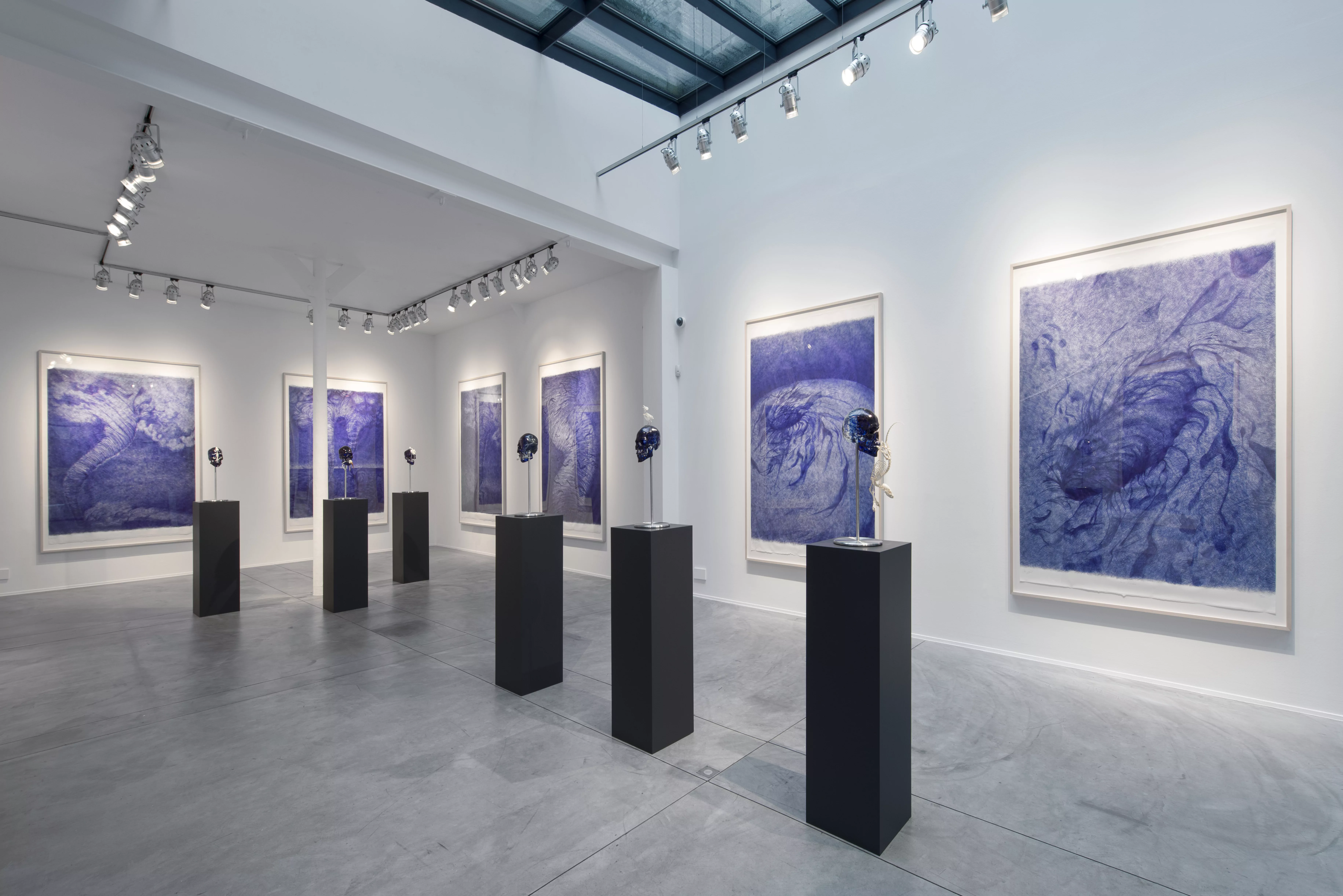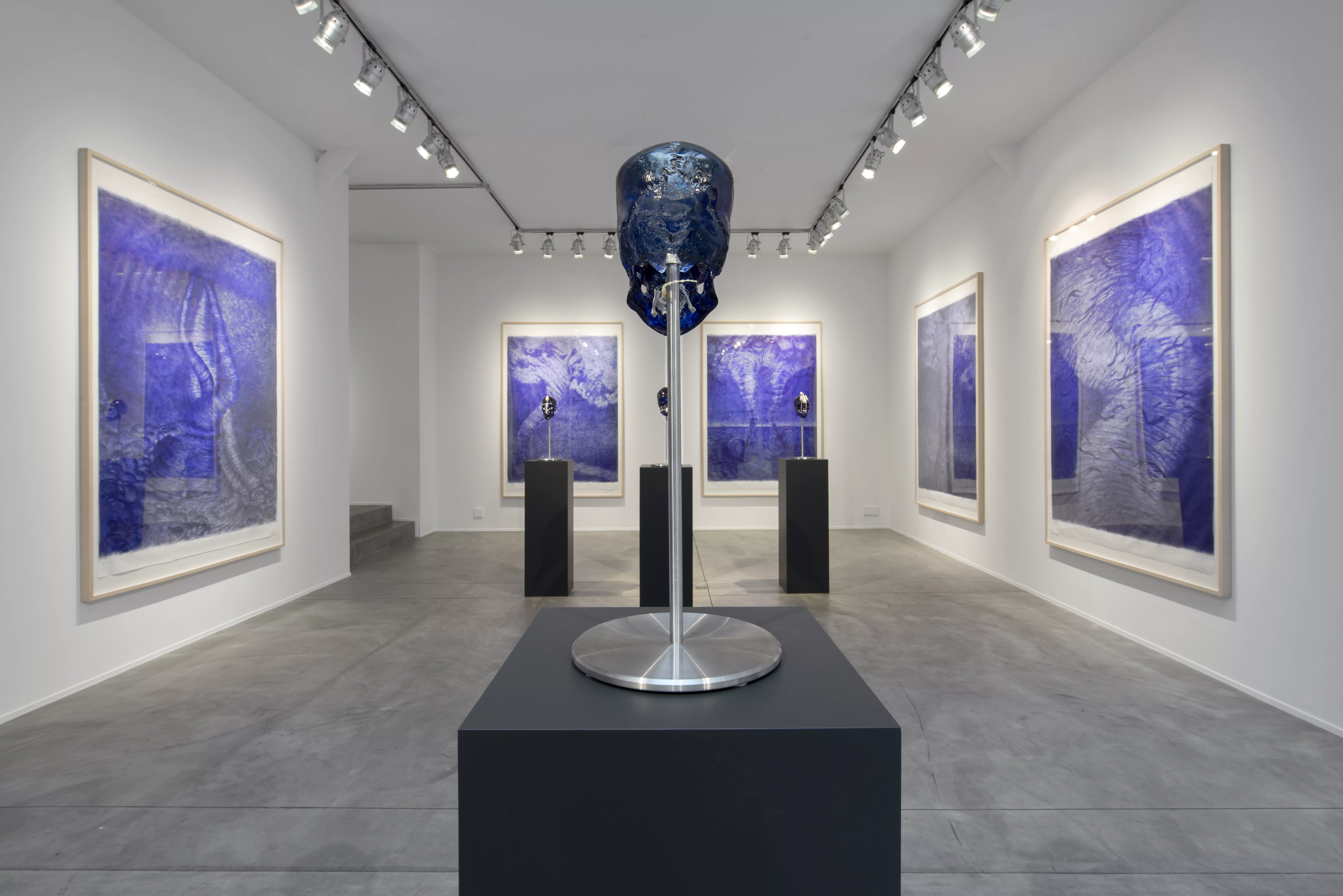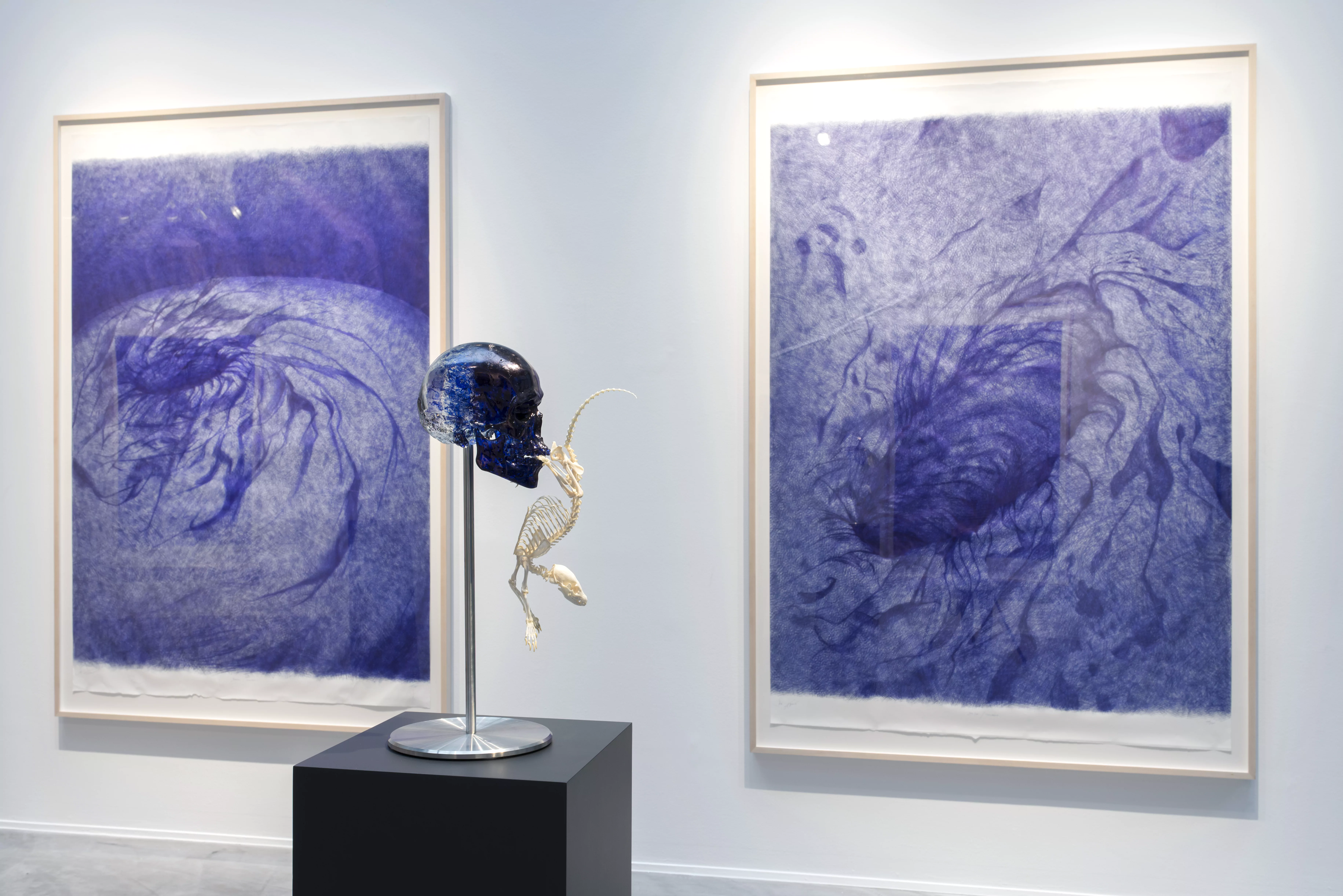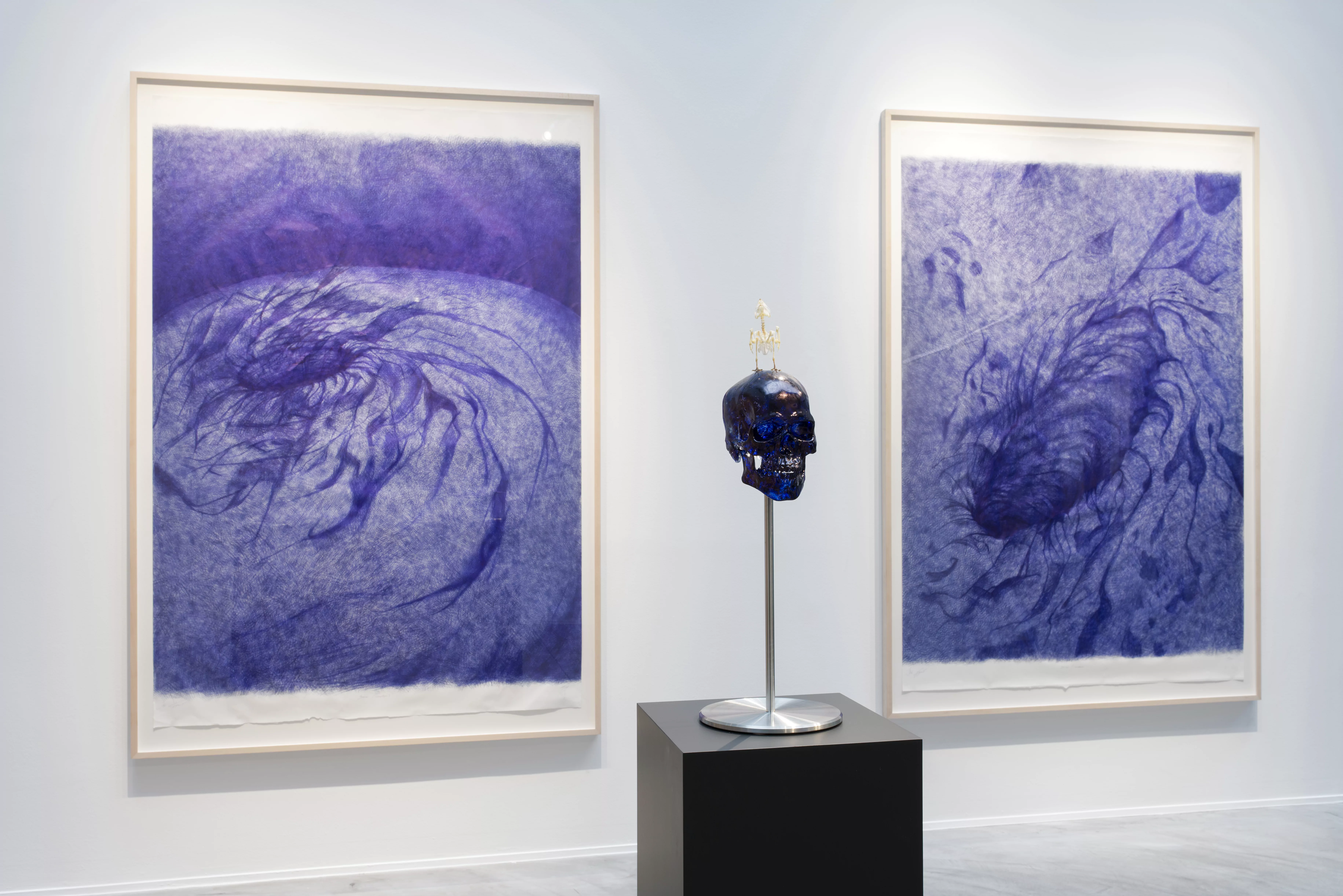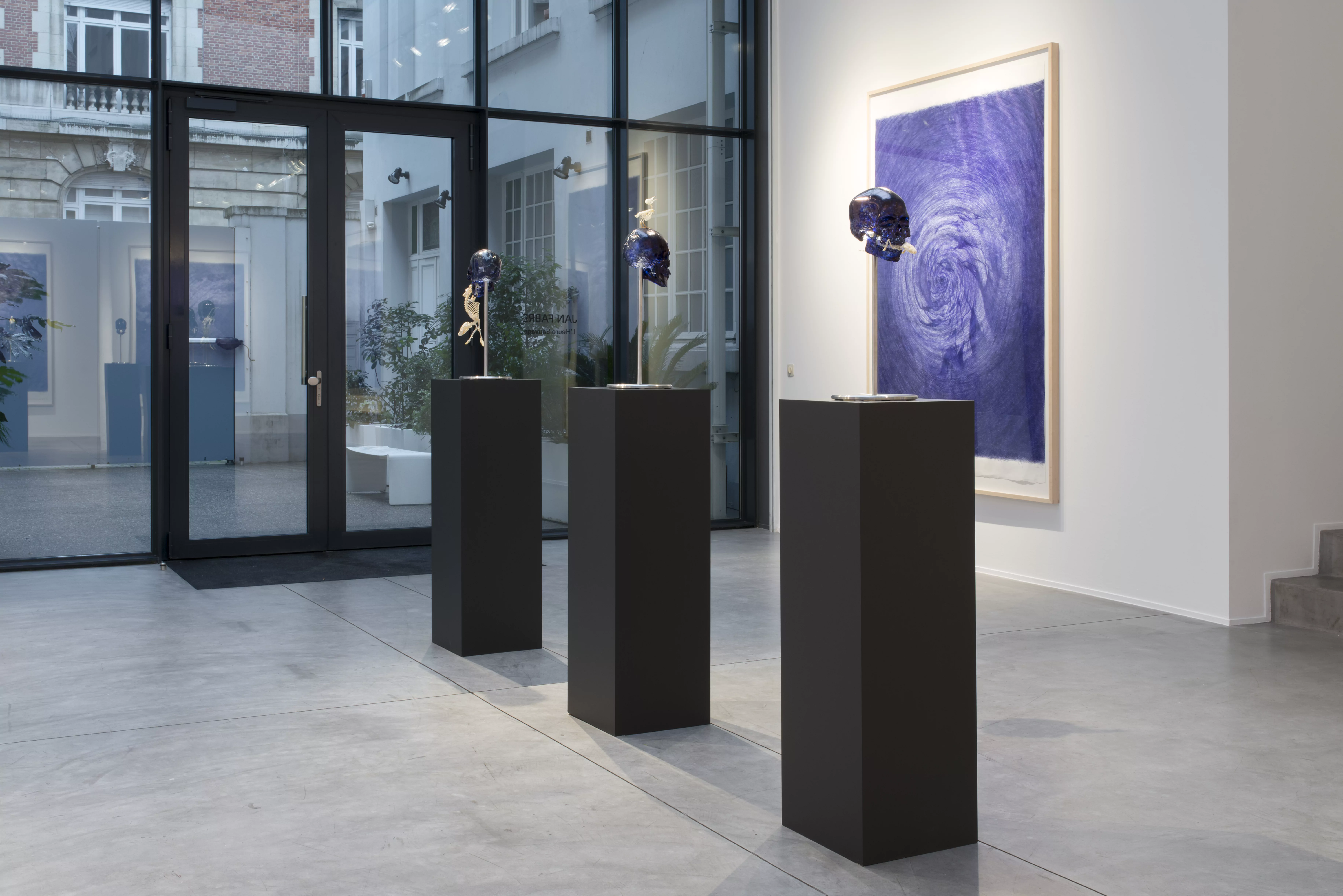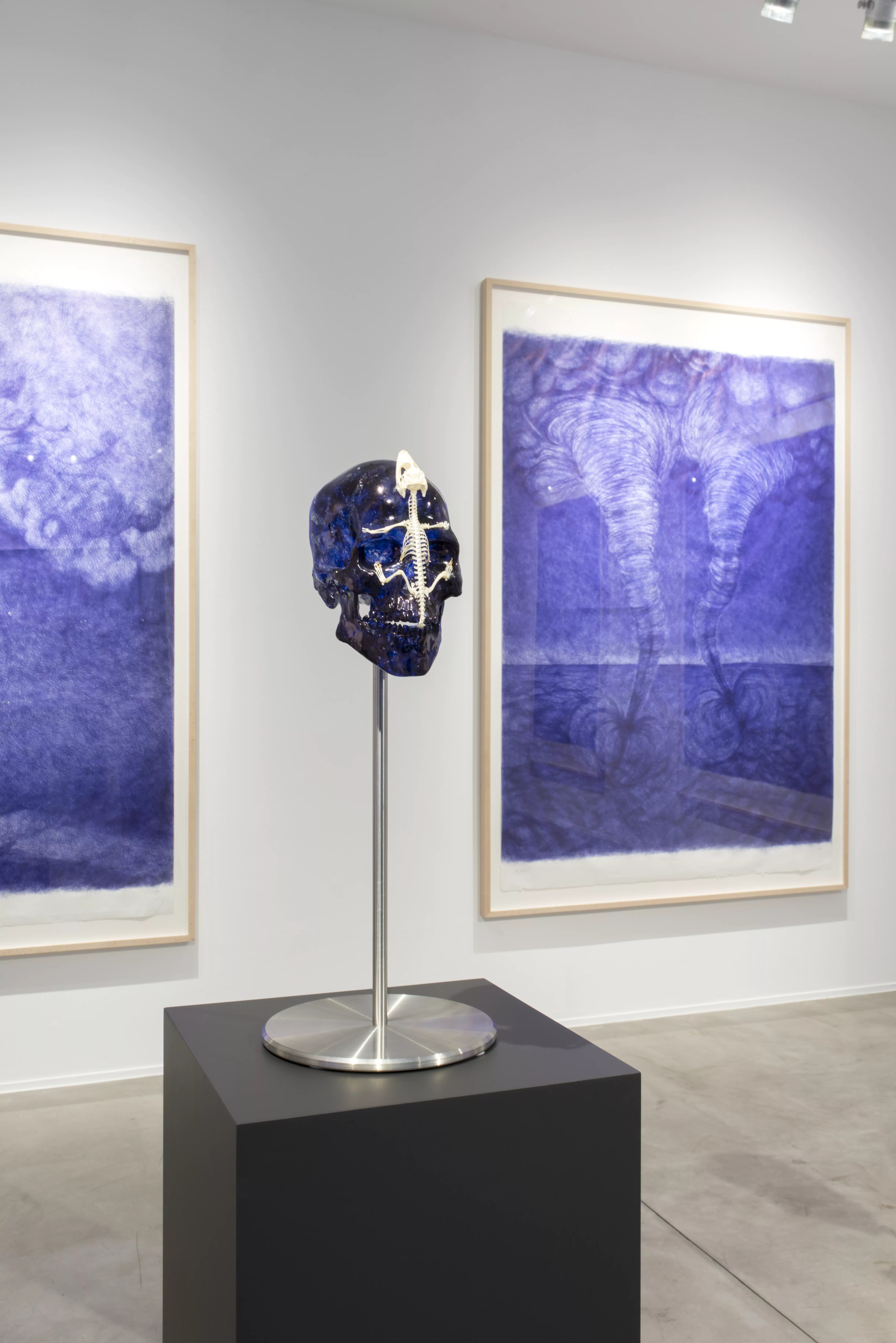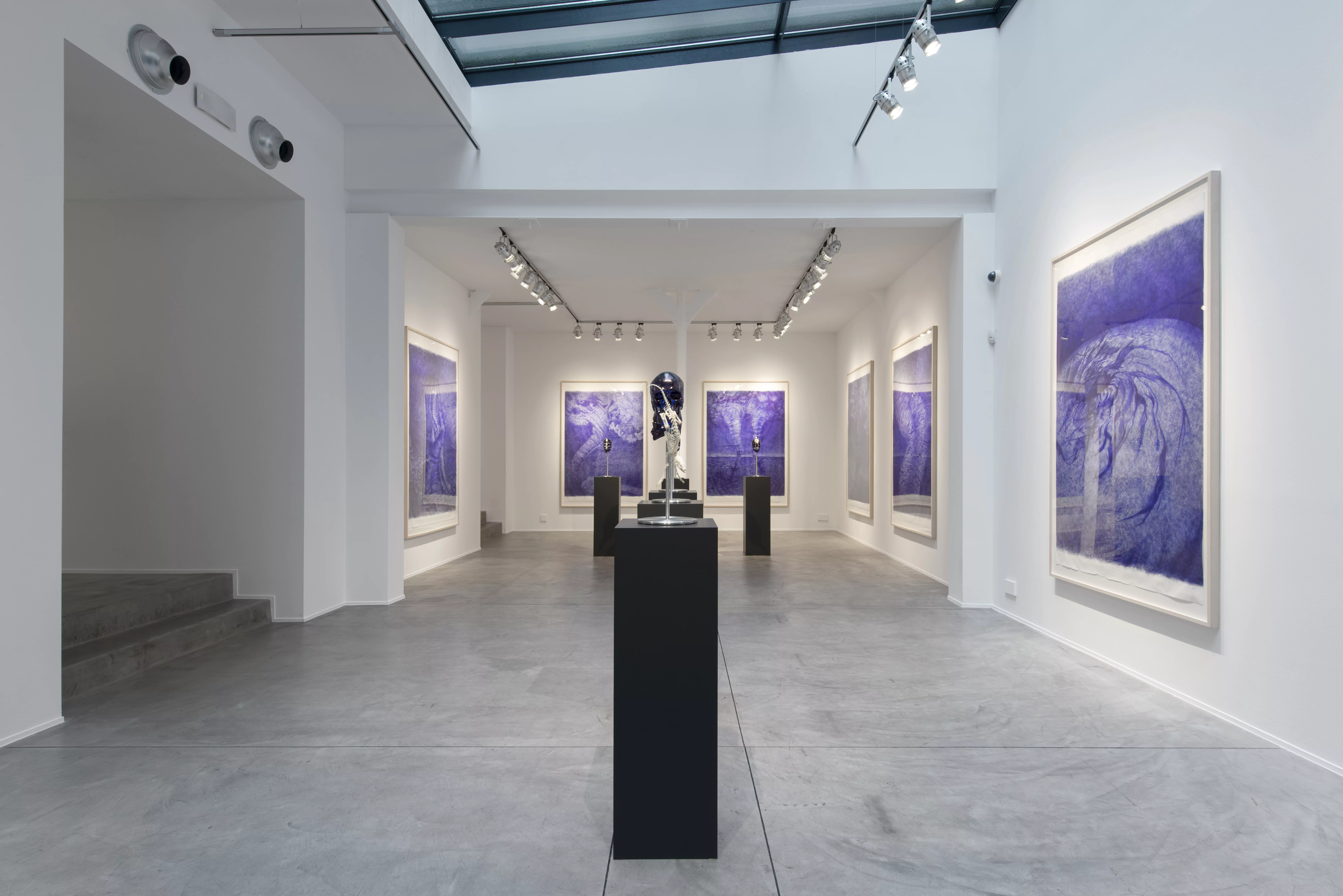
Jan Fabre
Jan Fabre. L’Heure Sauvage
Jan Fabre – visual artist, author and theatre producer/director – is back in the capital of his homeland to offer an immersion into the depths of L’Heure Sauvage [The Fierce Hour] and present-day vanities

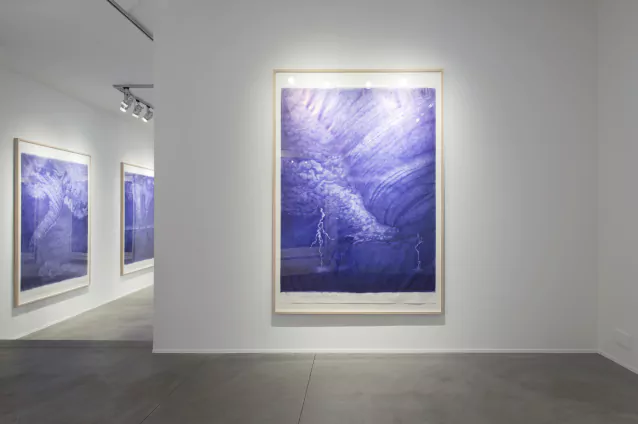
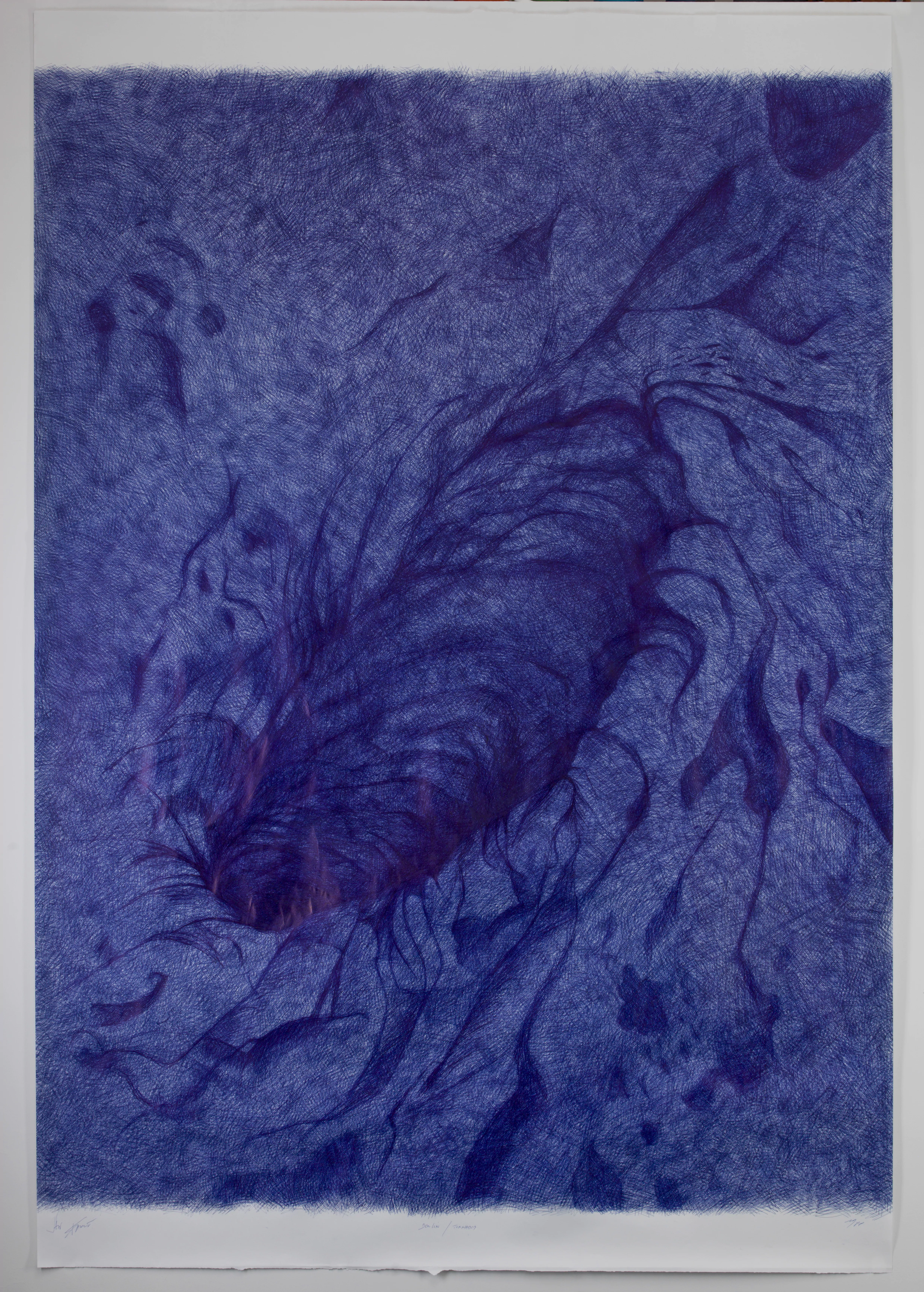
Jan Fabre is considered as one of the most important and innovative figures on the international contemporary art scene. A radical artist whose works have often unleashed passionate responses, Jan Fabre had his own “Blue Period” during the 1980’s, centring on the ballpoint pen, his then favourite material, with which he meticulously covered large expanses of paper to create his metaphorical and tormented drawings. In 1988, at the age of 30, Fabre found himself in Berlin, spending sleepless nights obsessively drawing, colouring and rubbing out an entire cosmogony featuring tornados, cyclones, giant waves and storms. The highly distinctive metallic blue of his disposable pen form mesmerizing landscapes, their details so dense and intense they almost seem to tear the paper. Each drawing thus emerges as the peak of a one-man performance, a powerful act on the verge of hallucination and exhaustion. The young artist, penniless at the time, sold the whole series to a generous patron. The drawings remained rolledup, untouched and forgotten for 30 years. Recently unearthed, they are now on public display for the first time, taking the viewer on a disconcerting journey through the genesis of Jan Fabre’s imagination.
In recent years, Jan Fabre has returned to blue ballpoint ink. Fans of this artistic technique can also see Le regard en dedans (L’Heure Bleue), a permanent installation created in 2011-2013 for the Oldmasters Museum’s royal staircase at the Royal Museums of Fine Arts of Belgium, walking distance from Galerie Templon’s Brussels space.
The exhibition title, L’Heure Sauvage, refers to The Hour Blue defined by entomologist Jean- Henri Fabre. It conjures up that brief moment of silence when Nature awaits the dawn with bated breath; a fundamental yet fleeting moment when life is suspended between two worlds, night and day, in an enthralling near darkness echoed in the artist’s metallic works with their subtle suggestion of curves. The blue ink becomes a skin, which both conceals and reveals, either reflecting the light like a mirror or shrouding the viewpoint. With his new sculptures in Murano glass, Fabre covers human skulls with ink-stained handprints. The skulls act as a mirror, giving us an unsettling vision of our own mortality. Like strange fetishes – vanities or self-portraits? – they are trapped under skeletons of animals: birds, rodents, and an entire fauna we imagine surviving the human race yet already decimated.
By bringing together these 1988 drawings with his 2018 sculptures, Jan Fabre has created – possibly unintentionally – a troubling collision between his artistic concerns, fascinated as he is by the limits of human nature and catharsis, and our contemporary preoccupations with environmental threats and mass extinction. The Berlin drawings are thus premonitory, giving Jan Fabre’s works a yet more apocalyptical dimension as they explore the animal world – with his beetles and stuffed animals – as well as the human condition.
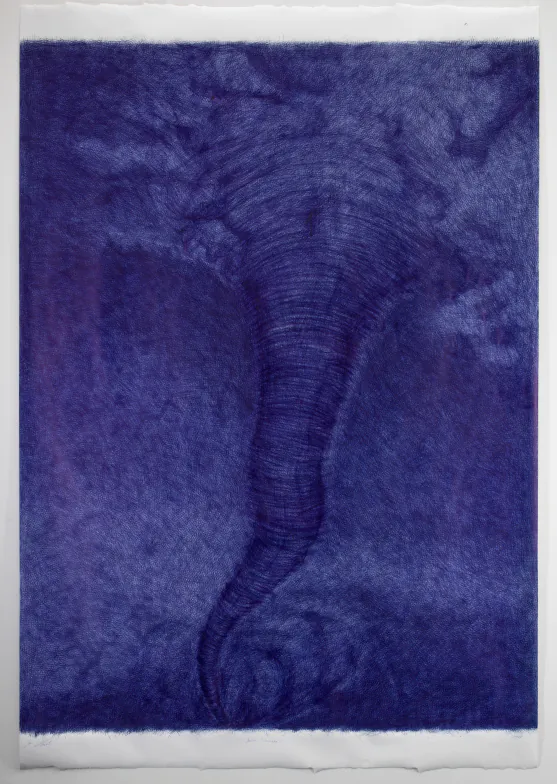
Berlin/ Tornado’s – (II), 1988
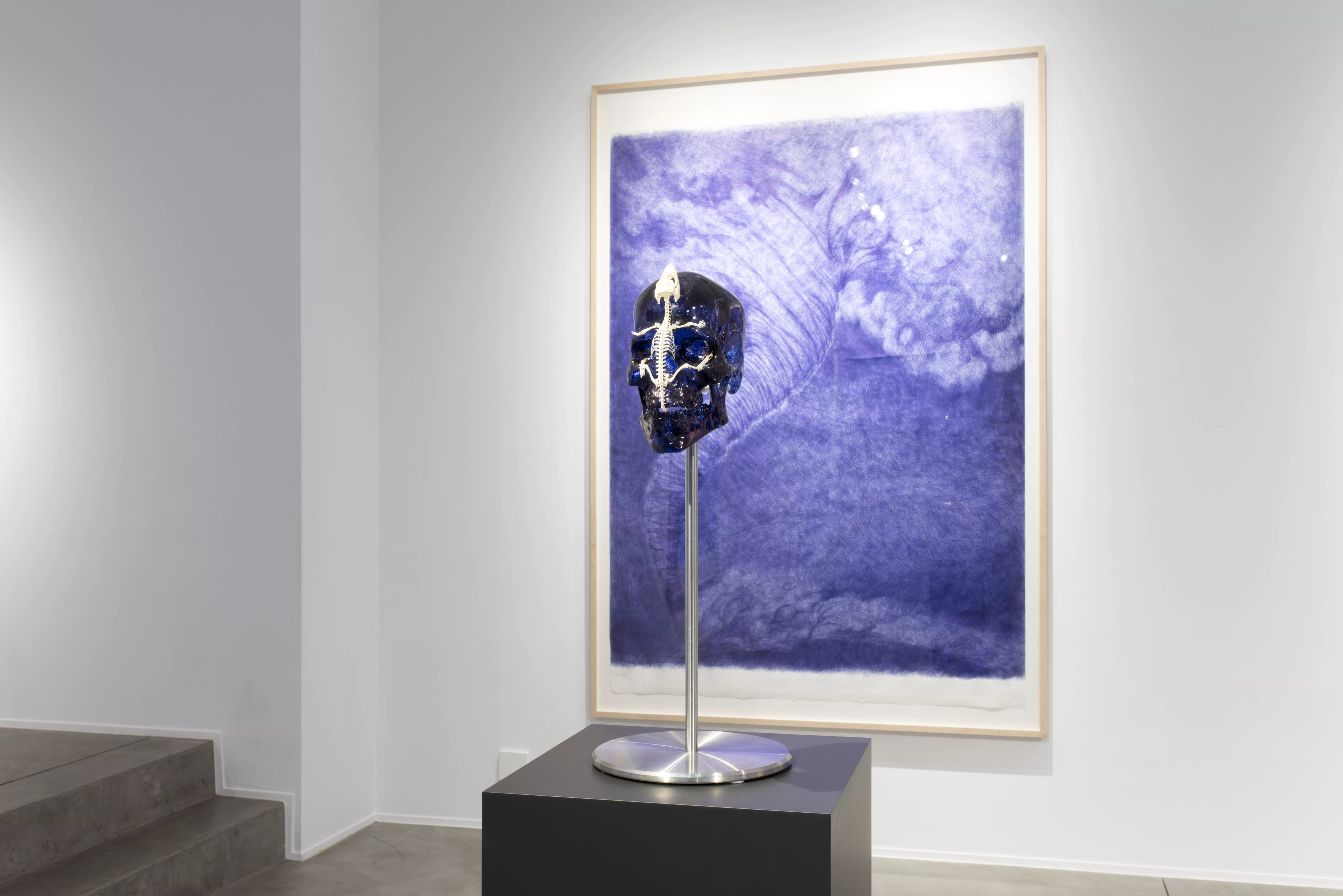
The artist
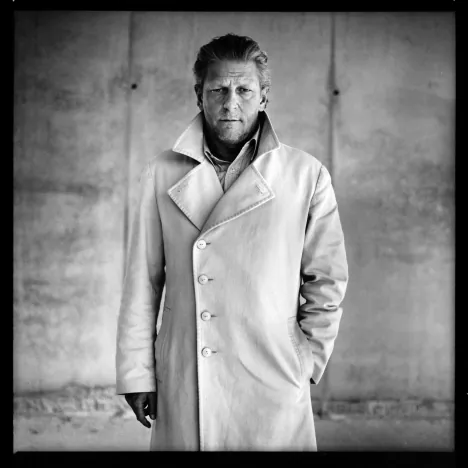
Jan Fabre was born in 1958 in Antwerp where he lives and works. He has worked in the theatre and is an internationally renowned choreographer. Over the last twenty years he has also developed a body of art work based on a variety of materials, including blood, ball-point pen ink, beetle wings, bones, stuffed animals and marble. Jan Fabre is an inveterate draughtsman, creating sculptures and installations that explore topics such as metamorphosis, the dialogue between art and science, humankind’s relationship to nature and the artist as a warrior of beauty.

